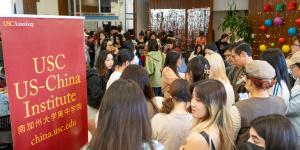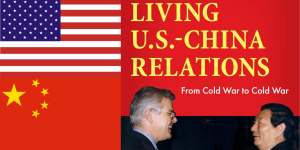Join us for a free one-day workshop for educators at the Japanese American National Museum, hosted by the USC U.S.-China Institute and the National Consortium for Teaching about Asia. This workshop will include a guided tour of the beloved exhibition Common Ground: The Heart of Community, slated to close permanently in January 2025. Following the tour, learn strategies for engaging students in the primary source artifacts, images, and documents found in JANM’s vast collection and discover classroom-ready resources to support teaching and learning about the Japanese American experience.
Changes in the World’s Workshop: How new laws, more demanding workers, and activist trade unions are transforming the Chinese workplace
The Berkeley Center for Law, Business and Economy hosts a lecture on labor laws and worker's rights in China.
Where

In 2008, the Chinese government passed three ambitious labor laws to improve working conditions at Chinese companies and the employment security of Chinese workers. Employers criticized these laws as a return to the age of the “iron rice bowl” under socialism, which guaranteed lifetime employment and extensive welfare benefits for all urban workers. Labor activists hoped that the new laws would help close the gap between the high standards of Chinese “law-on-the-books” with its implementation and enforcement in reality.
These protective measures coincided with the onset of the global financial crisis and a rapid decline in China’s export markets. The combination of more protective laws and greater economic volatility led to a rapid and unprecedented increase in labor conflict, including legal filings and large-scale strikes and demonstrations. In the wake of China’s recovery from the crisis, this conflict has continued. Workers are more aware of their new rights; trade unions have been encouraged by the government to do more to protect workers; and a labor shortage in manufacturing has emboldened workers to press for higher wages and better conditions.
This talk will discuss these important trends, upcoming local and national legislation, and the implications for the future of the world’s workshop.
Featured Articles
Please join us for the Grad Mixer! Hosted by USC Annenberg Office of International Affairs, Enjoy food, drink and conversation with fellow students across USC Annenberg. Graduate students from any field are welcome to join, so it is a great opportunity to meet fellow students with IR/foreign policy-related research topics and interests.
RSVP link: https://forms.gle/1zer188RE9dCS6Ho6
Events
Hosted by USC Annenberg Office of International Affairs, enjoy food, drink and conversation with fellow international students.
Join us for an in-person conversation on Thursday, November 7th at 4pm with author David M. Lampton as he discusses his new book, Living U.S.-China Relations: From Cold War to Cold War. The book examines the history of U.S.-China relations across eight U.S. presidential administrations.




